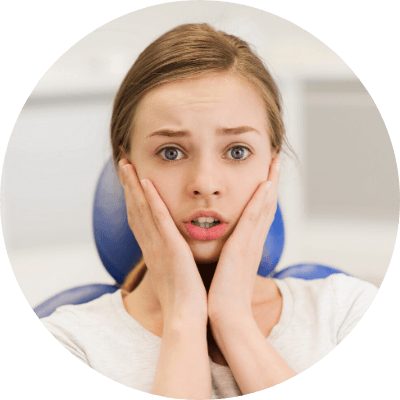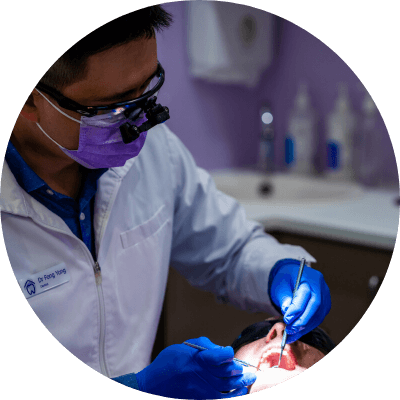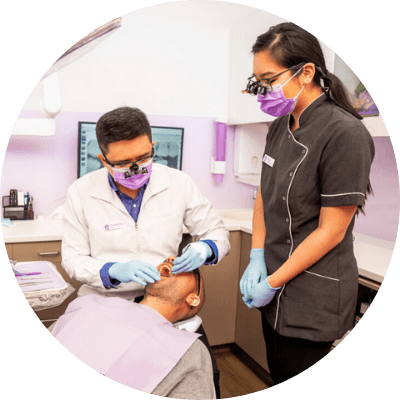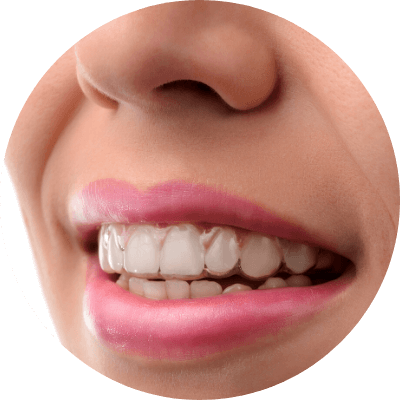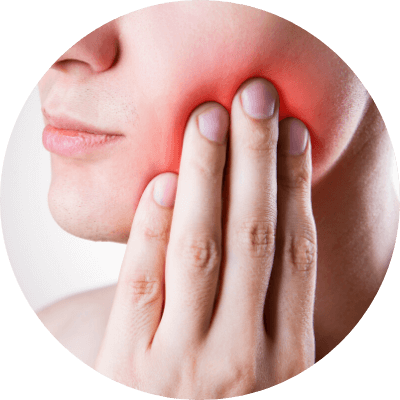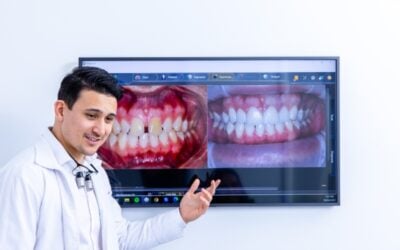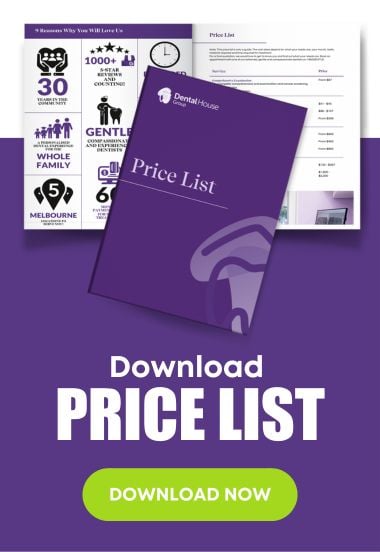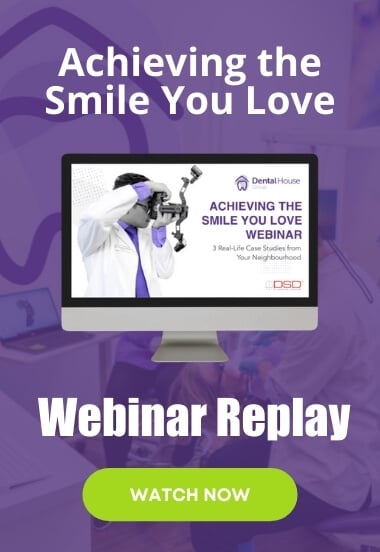Your Dentist And NASA …?
Your Dentist And NASA …?

In space, no one can hear you scream.
Even if your mouth is killing you.
To date, dental emergencies during space missions are fairly atypical, but that’s expected to change with long-duration flights to Mars or deep space. It’s not possible to evacuate an astronaut back to Earth for dental treatment, and communication delays negate any contact
with specialists on the ground. Crew will have to be prepared to treat any incidences with the available equipment and resources.
With the length of time needed and the utter remoteness of future space exploration, potential risks to both the astronauts and the mission are significant. Certainly dental emergencies have to be taken into account; further to the already intensive pre-flight examinations and evaluations.
Strategies for in-flight-prevention, and dental training are in development – currently no procedure or technology is available to sustain and restore teeth during these projected and intense missions.
In 2020, the completion of a 201-day flight was regarded as extraordinary.
Prior to the existence of space stations, the longest flight was only 18 days; an endurance record for 1970. Russian space station Mir hosted numerous long-duration missions during its 15 years of operation, with the human spaceflight record standing at 438 days – the longest single space mission to date.
Almost long enough for the 500-day round-trip to Mars. NASA’s latest vision for its first crewed Mars mission is aimed to launch by the late 2030s or early 2040s. Its objective is a 30-day, two-person surface mission.
It seems that in the near future men will go to Mars, women might go to Venus and astronauts will be the envy of YouTube DIY dentists.
Sitting in the waiting room doesn’t seem so bad now, does it. Particularly if you’re there for some laser treatment – thanks NASA!
Dentistry is a frequent beneficiary of space research – which is maybe why it reciprocated with the toothpaste tube for food storage and delivery in space.
It was the least it could do, really.
Most recently, as the result of three engineers at NASA’s Langley Research Centre is dual-wavelength laser technology. Dentists can now work on both hard and soft tissue with one compact machine.
For patients, lasers mean the end of drilling.
Curiously, until 2012 no one had ever directly investigated how the sounds of dental instruments affect brain activity. The screaming pitch of a dentist’s drill might bring on the shakes and a racing heart, but what happens in the brain had long been a mystery.
Nippon Dental University in Tokyo took to unravelling how the brain reacts to the sound by defining the neural activity between those who feel no fear going to the dentist, and the most anxious of dental patients.
When participants in the low-fear group were exposed to dentist’s sounds like suction tools and drills, there was a higher response in the left and right superior temporal gyri than with neutral sounds. These are major areas of the brain, involved in language comprehension, auditory processing, auditory short-term memory; and a critical structure in social cognition.
Unsurprisingly, dental tool sounds triggered more activity in this primary auditory region of the brain.
Anxious people responded differently.
Instead of a surge of brain activity in the auditory areas, there was intense response in another region – the left caudate nucleus. This paired, c-shaped subcortical structure lies deep inside the brain near the thalamus with a crucial role in various, and higher neurological functions. It helps process visual information and movement control, and is significantly engaged in working memory, cognitive function, and emotion.
The results indicated a learning and remembering of the sounds – like the dental drill – that trigger an emotional response that was not at all evident in the fMRI images of the other group.
Considering that the strongest predictor of oral procedure pain and discomfort is dental anxiety, fearful patients are four times more likely to experience it. Research like this offers scientific assessment methods to make patients more at ease, which ultimately gives much better outcomes. To have this group of people more willing to attend the dentist, and to attend more often, would drastically change instances of chronic and serious oral health issues.
Brain space. The final frontier…
Laser dentistry don’t just mean the end of drilling. Because of this space-age technology, procedures are more straightforward, and virtually painless. Using anaesthetic becomes the exception rather than the norm. Filled teeth remain stronger because the precision of a laser leaves more healthy tooth tissue. There’s minimal bleeding during surgery because of cauterisation.
Without this necessity for sutures there’s reduced risk of infection; and surrounding tissue – whether tooth or gum – is less compromised.

Laser teeth whitening is safer for teeth surfaces, and gives a more immediately intense result. Dental cleaning is more rapid and selective, and gum disease can be treated.
Everything heals faster.
All this, because NASA was developing high-power lasers to measure wind shear and wake vortice turbulence, and the ability to remotely read the atmosphere.
One small step for NASA, one giant leap for dentistry.
Sophisticated space technology has had a longstanding and pivotal role in dentistry. Almost two decades ago dentists made use of NASA’s proven technology to ensure water is free of bacteria, viruses and any other harmful organisms. Originally developed for air and water purification in spaceflight, it’s similar to systems used for life support during space walks.
Open the pod bay doors, Hal…
That crafty cavity filling is largely due to spacecraft tile technology. There is the stark possibility that progressive materials for the improvement of helmet faceplates will have dental applications.
And if you think invisible braces aren’t rocket science, they are.
The technology and substance of clear aligners was originally designed to protect the infrared antennae of heat-seeking missile trackers. This magic material is transparent polycrystalline alumina (TPA).
It’s a light-absorbing (ergo translucent) ceramic powder that can be sintered and shaped. Tougher than carbon steel (the strongest metal known to man) it’s highly malleable, and fracture resistant.
Brace yourself, it gets weirder: this hardness and flexural strength deems it a candidate material for transparent armour.
May the force be with you – against periodontal disease.
It is the single most destructive dental disease in adults over 35. The current manual probing method to determine pocket depth is invasive, painful and inaccurate. New technology currently in development with the US Navy and NASA will be the next important tool in the battle against tooth loss. Ultrasound echo waveforms will detect the onset of periodontal disease. Rather than sliding metal, dentists will simply run the new device along the gumline to automatically locate, map, and diagnose. It’s a technology developed to detect cracks in aeroplanes without having to take them apart.
So don’t see stars in the dentist’s chair. Reach for them.
DISCLAIMER:
The content has been made available for informational and educational purposes only. New Gisborne Dental House does not make any representation or warranties with respect to the accuracy, applicability, fitness, or completeness of the content.
The content is not intended to be a substitute for professional personal diagnosis or treatment. Always seek the advice of your dentist or another qualified health provider with any questions you may have regarding a dental or medical condition. Never disregard professional advice or delay seeking it because of something you have read or seen on the Site.


